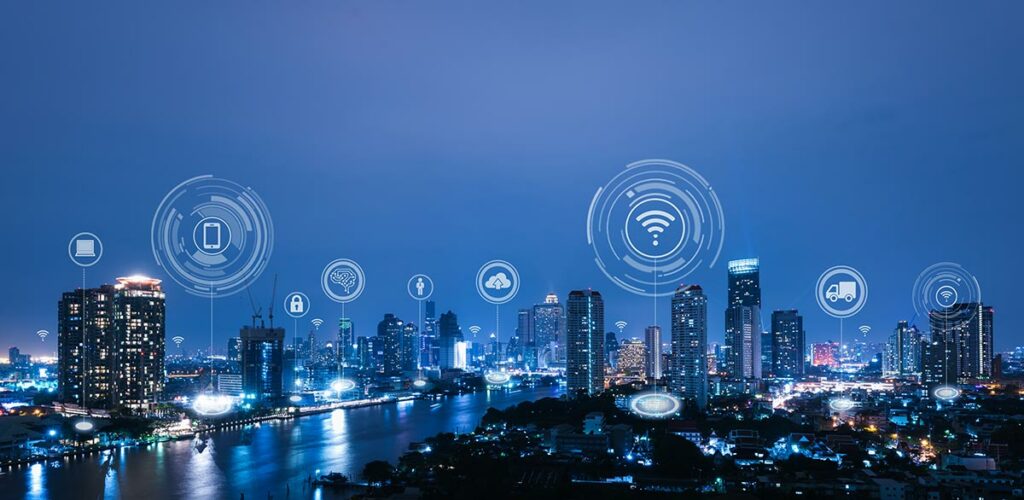Today I want to dive into a topic that excites me both as a former athlete and as an entrepreneur deeply involved in urban development: the rise of smart cities. The integration of technology in urban planning is revolutionizing how cities operate, making them smarter, more efficient, and more sustainable. Let’s explore how this transformation is unfolding and what it means for the future of urban living.
What Are Smart Cities?
Smart cities use digital technology to enhance performance and well-being, to reduce costs and resource consumption, and to engage more effectively and actively with their citizens. It’s about enhancing the quality and performance of urban services like energy, transportation, and utilities to reduce resource consumption, wastage, and overall costs. The overarching aim is to enhance the quality of living for its citizens using smart technology.
Enhanced Connectivity and Mobility
One of the hallmarks of smart cities is enhanced connectivity. This goes beyond just high-speed internet access to include a network of sensors and IoT (Internet of Things) devices that collect data used to manage assets, resources, and services efficiently. This data is crucial in managing everything from traffic flow to public transportation and energy usage.
For instance, smart traffic management systems use real-time data to adjust traffic signals to reduce congestion and improve mobility. As someone who appreciates efficiency, seeing technology applied in this way to solve real-world problems is incredibly satisfying.
Sustainable Urban Environments
As a proponent of sustainable development, I am particularly interested in how smart cities promote sustainability. These cities leverage technology to improve energy efficiency, water management, and waste reduction. Smart grids, for example, use data to optimize the production, distribution, and consumption of energy, significantly reducing waste and ensuring energy is used efficiently.
Furthermore, technology enables the development of green buildings and better waste management systems that not only reduce the impact on the environment but also offer healthier living spaces for residents. This aspect of smart cities is not just about making urban areas more livable but also about ensuring they are sustainable for future generations.
Improving Public Services and Engagement
Smart cities also revolutionize how public services are delivered and how citizens engage with their governments. Digital platforms can provide residents with easy access to public services, from paying bills to reporting problems in the community. This digital engagement helps improve the efficiency of service delivery and ensures that citizens have a voice in urban governance.
Moreover, during emergencies, the robust communication networks of smart cities can be invaluable. They provide real-time updates and critical information to residents, enhancing city-wide safety and preparedness. This level of interconnectivity and responsiveness is something that truly showcases the power of technology in urban development.
Challenges and Considerations
However, the transition to smart cities is not without its challenges. Issues such as data privacy, cybersecurity, and the digital divide must be addressed to ensure these urban transformations benefit everyone. As cities become smarter, they also become targets for cyber-attacks, which can jeopardize everything from personal data to essential city services.
Moreover, there is the risk of creating a digital divide where only those with access to digital technologies can benefit from the conveniences of a smart city. It is crucial to develop strategies that include all citizens in the smart city vision, ensuring equitable access to technology and its benefits.
The Future of Urban Living
The future of urban development is undoubtedly smart. With rapid urbanization, cities must turn to technology to handle the increasing pressures on infrastructure and services. As an entrepreneur involved in urban development, I am excited about the possibilities that smart city technologies offer. They provide a pathway to making cities more sustainable, efficient, and livable.
From an athlete who valued precision and efficiency on the field, transitioning into an entrepreneur in the urban development space, the evolution into smart cities resonates with my core values of sustainability, efficiency, and quality of life. I believe that by embracing technology, we can transform urban centers into thriving, sustainable communities that are not just capable of meeting the challenges of today but are also prepared for the future.
Conclusion
As we continue to develop and integrate new technologies into urban planning, the concept of smart cities is becoming a reality. For developers, city planners, and residents alike, this shift represents a significant evolution in how we think about and interact with our urban environments. It is a complex but exciting frontier in urban development, one that promises to reshape our cities into models of efficiency and innovation. As we move forward, it’s crucial to ensure these technologies are used responsibly and inclusively, paving the way for smarter, more sustainable cities worldwide.
